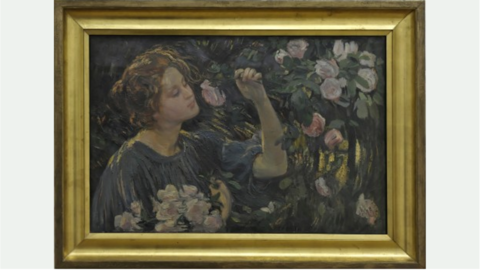It may be assumed that in opening his “Art House” in August of 1913 and thus changing his address from Goethestraße to Beethovenplatz in Munich, Franz Joseph Brakl also changed his firm’s logo. The paper label must therefore have been affixed before 1913, when the “Modern Art Gallery” was still located at Goethestraße 64 in Munich. Based on this assumption, the painting here under consideration must be dated earlier: not “circa 1917” but “before 1913”.
Dora Hitz was a member of the “Verbindung bildender Künstlerinnen Berlin-München” [Berlin-Munich Association of Women Artists], that also exhibited in Brakl’s Modern Art Gallery in the years 1907 and 1908. Whether, and if so when, Dora Hitz’s painting was exhibited there cannot yet be determined.
The initials printed on the red adhesive label—L.B. & S.—also remain a mystery.
A satisfying conclusion - though not entirely so
In this case, examination of the picture’s back brought some interesting details to light, leading to an earlier dating of the painting. Despite further research into the business records of Johann Weber, the Brakl art gallery, and various exhibitions in which Dora Hitz took part, to date the painting’s provenance has not been fully determined.
Miriam Olivia Merz




